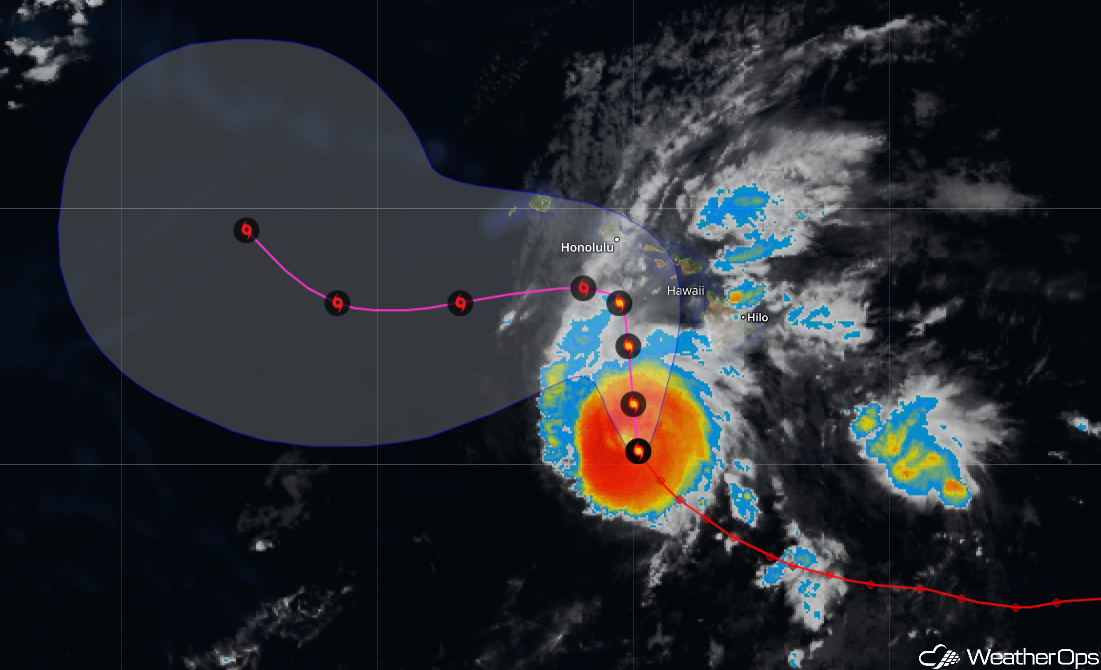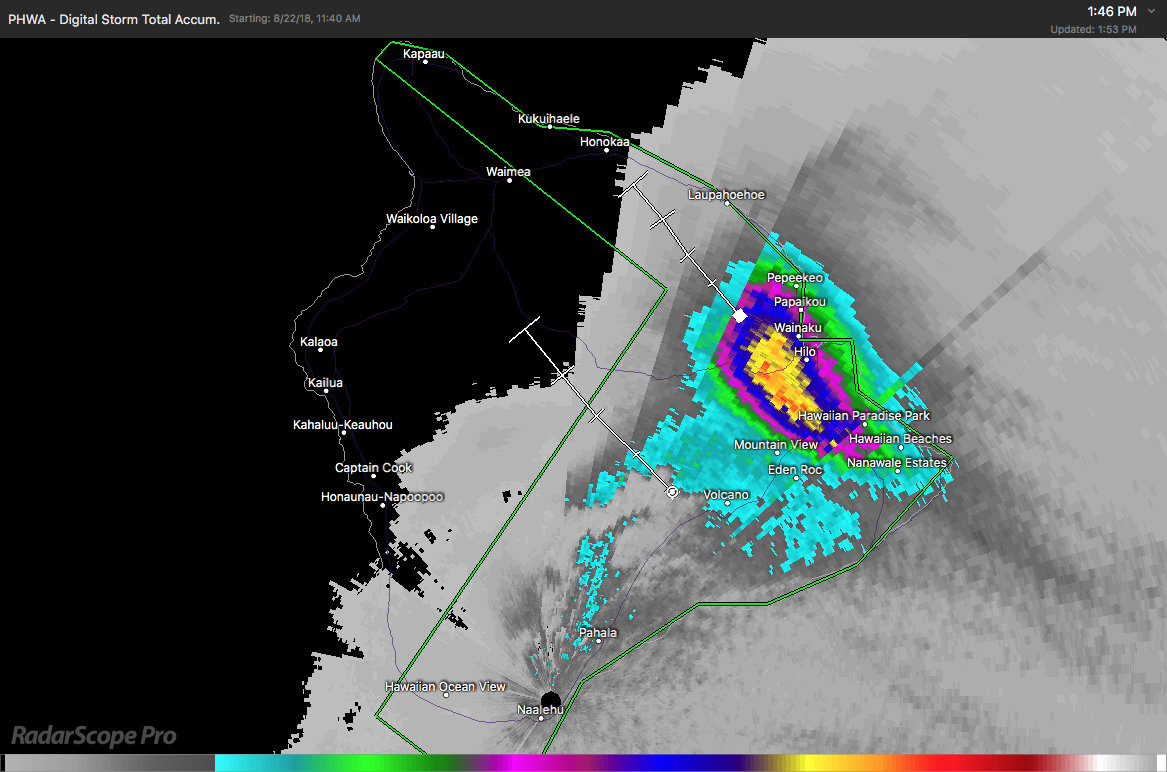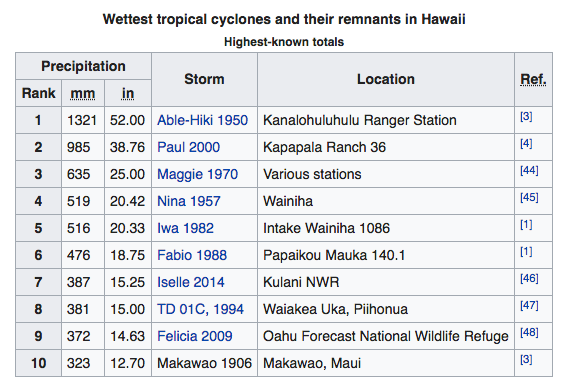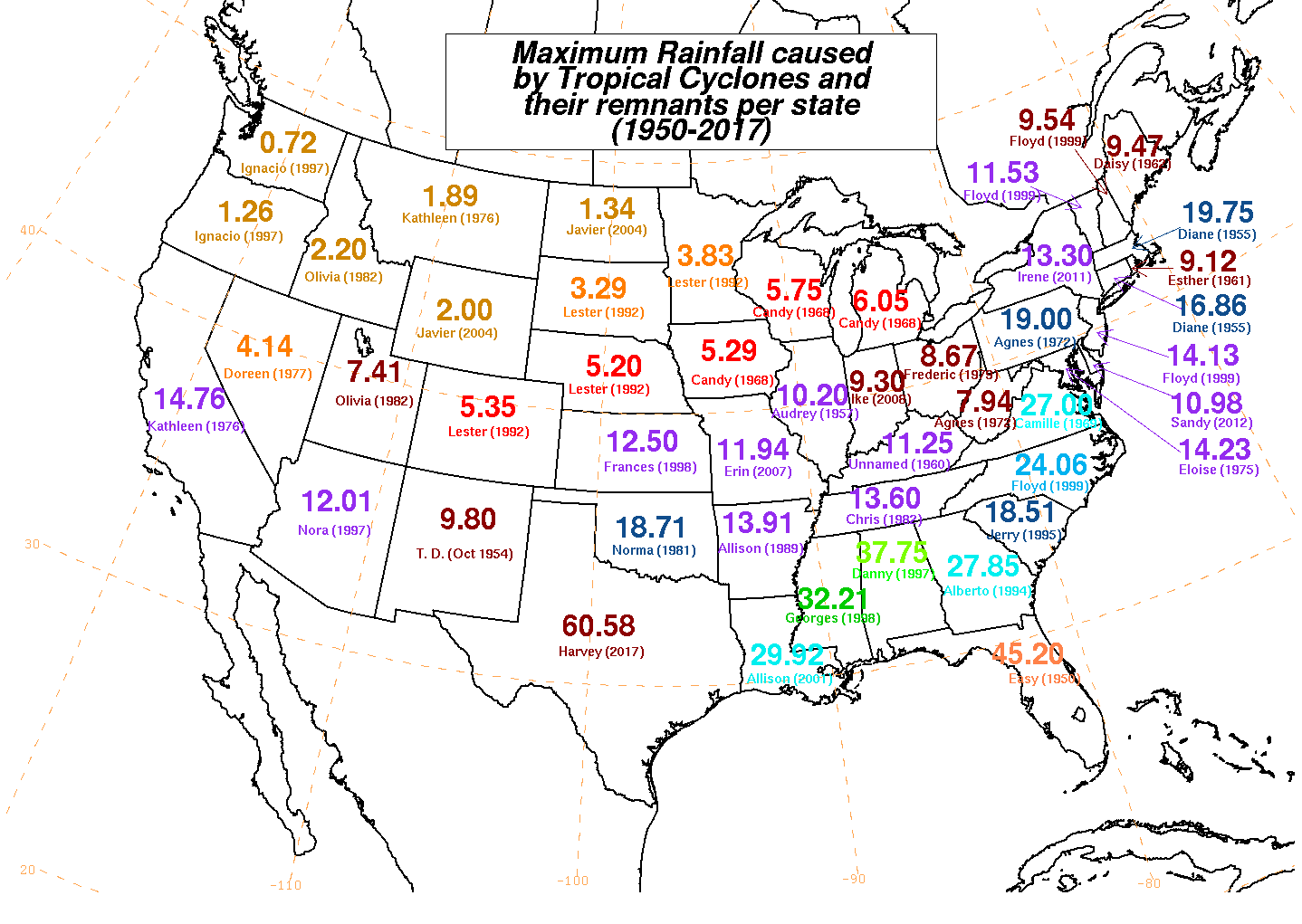Is 30 Inches of Rain From a Tropical Storm Unusual?
by Daphne Thompson, on Aug 23, 2018 2:19:27 PM
As Hurricane Lane continues its path around the Hawaiian Islands, a lot of rain is in the forecast. Flash Flood Warnings are in effect, schools and businesses are closed, and there are reports of mudslides over roads on the Big Island. The forecast is calling for upwards of 30 inches of rain.

Viewing RadarScope's Digital Storm Total, you can see that as of 2 pm CDT eastern parts of the Big Island have received over 10 inches of rain. With Lane moving at only seven mph, more rain is expected over the two days.

So, is it unusual for Hawaii to get nearly 30 inches of rain from a hurricane? Looking at the chart below, we can see the maximum amount of rainfall recorded in the past. If this forecast comes to fruition, Lane will end up in the top three of wettest tropical cyclones. According to these data, the island chain has a storm with heavy rain affect them every 5-10 years.

How does this compare to the rest of the United States? Many of us still vividly recall the pictures of Houston under water from Hurricane Harvey. Over 60 inches of rain was recorded from that event. Most of the Gulf States have seen tropical storm totals of near or over 30 inches.

Of course, a big difference between the Gulf States and Hawaii is the terrain. Mauna Kea has an elevation of 13,803 feet and is the tallest mountain on Earth measured from base to summit. Mauna Loa totals 13,678 feet high and is still an active volcano. The Hawaiian Islands have seven peaks that exceed an elevation of 5,000 feet. It is this extreme topography that presents the opportunity for devastating flash floods.

Anyone with interests in the Hawaiian Islands needs to continue to pay attention to the forecast. Those living or vacationing in the area should head local emergency management statements. And never drive on roads covered with water; turn around, don't drown.







